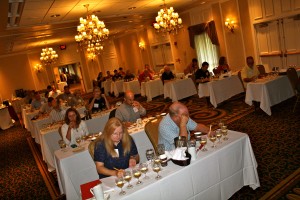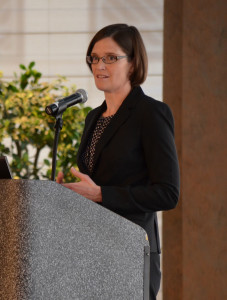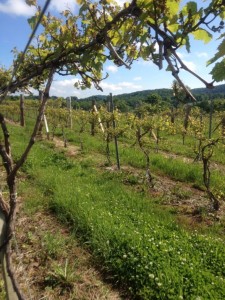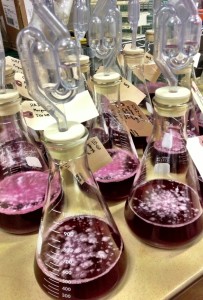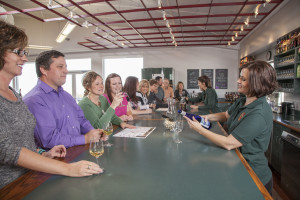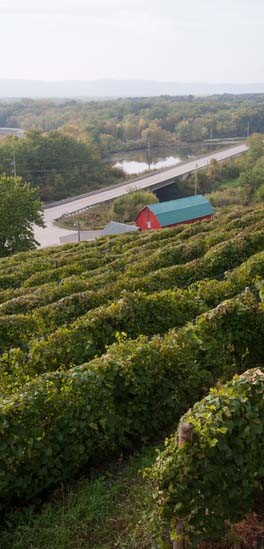Click each research project title to access a full report documenting work done in Year 3.
Objective 1: Document the cold climate varietal performance in variable climates and understand the resulting sensory characteristics of the fruit and wines.
 -Combined analysis of NE-1020 variety trials in ND, SD, NE, IA, MI, NY, VT, and CT.
(New York report)
-Combined analysis of NE-1020 variety trials in ND, SD, NE, IA, MI, NY, VT, and CT.
(New York report)(Vermont report)
-Sensory profile analysis: Preliminary characterization of wine aroma profiles using solid phase microextraction and simultaneous chemical and sensory analyses.
-Frontenac and Marquette Berry Skin and Pulp Characterization During Ripening
-Sensory Characterization of Frontenac and Marquette Berries and Wines by Descriptive Analysis
Objective 2: Develop and extend research-based vineyard management practices that allow sustained production of high quality fruit from cold climate cultivars.
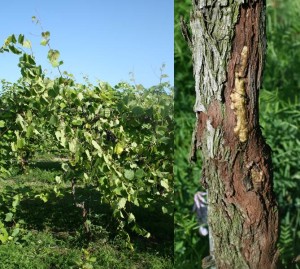 -Effects of Spacing, Training, and Pruning on Vine Performance and Fruit Quality of St. Croix in Connecticut
-Marquette, Frontenac, St. Croix, and La Crescent Training Trial in Nebraska
-Effects of Spacing, Training, and Pruning on Vine Performance and Fruit Quality of St. Croix in Connecticut
-Marquette, Frontenac, St. Croix, and La Crescent Training Trial in Nebraska-Vineyard Training Systems for Improving the Quality of‘Frontenac’, ‘La Crescent’ and ‘Marquette’ Grapes
-Marquette Training Trial
-Frontenac Training Trial
-Marquette Crop Load and Training System Trial for Michigan
-Influence of Crop Load on the Quality of‘Frontenac’, ‘La Crescent’ and ‘Marquette’ Grapes
-Grapevine Nutrition and Juice Quality
-Copper and Sulfur Sensitivity of Northern Grape Cultivars
Objective 3: Develop and optimize winemaking practices to sustainably produce and market distinctive, high quality wines from cold climate cultivars.
-Yeast Trials for Improved Wine Quality in Cold Climate Cultivars-Optimizing Deacidification Methods for Cold Climate Cultivars
-Yeast Assimilable Nitrogen (YAN) Optimization for Fermentation of Cold Climate Cultivars
Objective 4: Identify strategies to support sustainable development of businesses based on cold climate cultivars, from the individual winery to regional agri-tourism.
-Baseline Monitoring for the Cold Hardy Grape and Wine Industries-Policy Analysis for the Cold Hardy Grape and Wine Industries
-Brand Research for the Cold Hardy Grape and Wine Industries
-Who are the Consumers of Cold Climate Wines?
-Establishing cost of production estimates for Hybrid Grapes
Click each research project title to access a full report documenting work done in Year 2.
Objective 1: Document the cold climate varietal performance in variable climates and understand the resulting sensory characteristics of the fruit and wines.
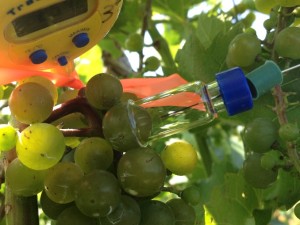 -Combined analysis of NE-1020 variety trials in ND, SD, NE, IA, MI, NY, MA, VT, and CT.
(MA state report)
(VT state report)
-Sensory characterization of Frontenac and Marquette berries and wines by descriptive analysis
-Frontenac and Marquette Berry skin and pulp characterization during ripening
-Sensory profile analysis: Preliminary characterization of juice and wine aroma profiles using solid phase microextraction and simultaneous chemical and sensory analyses
-Volatile metabolite analysis: Characterizing emissions from the grape cluster microenvironment in the field (in vivo) and in the laboratory from destructive sampling of berry skin and pulp using solid phase microextraction and simultaneous chemical and sensory analyses
-Fruit ripening profiles of cold climate wine grape cultivars
-Combined analysis of NE-1020 variety trials in ND, SD, NE, IA, MI, NY, MA, VT, and CT.
(MA state report)
(VT state report)
-Sensory characterization of Frontenac and Marquette berries and wines by descriptive analysis
-Frontenac and Marquette Berry skin and pulp characterization during ripening
-Sensory profile analysis: Preliminary characterization of juice and wine aroma profiles using solid phase microextraction and simultaneous chemical and sensory analyses
-Volatile metabolite analysis: Characterizing emissions from the grape cluster microenvironment in the field (in vivo) and in the laboratory from destructive sampling of berry skin and pulp using solid phase microextraction and simultaneous chemical and sensory analyses
-Fruit ripening profiles of cold climate wine grape cultivars
Objective 2: Develop and extend research-based vineyard management practices that allow sustained production of high quality fruit from cold climate cultivars.
-Frontenac training trial -Marquette training trial -Vineyard training systems for improving the quality of Frontenac, La Crescent, and Marquette grapes -Effects of spacing, training, and pruning on vine performance and fruit quality of St. Croix -Nebraska training system studies -Canopy management practices to improve light interception and quality of Frontenac, La Crescent, and Marquette grapes -Influence of crop load on the quality of Frontenac, La Crescent, and Marquette grapes -Wisconsin crop load studies -Frontenac and La Crescent crop load trials -Marquette crop load and training system trial for Michigan -Grapevine nutrition -Copper and sulfur sensitivity for northern grape cultivars -Grape cultivar sensitivity to sulfur in North DakotaObjective 3: Develop and optimize winemaking practices to sustainably produce and market distinctive, high quality wines from cold climate cultivars.
-Yeast trials for cold-hardy wines -Optimizing deacidification methods for cold climate grape cultivars -Enhancement of red wine structure and mouthfeel through the addition of enological tannins
Objective 4: Identify strategies to support sustainable development of businesses based on cold climate cultivars, from the individual winery to regional agri-tourism.
-Baseline monitoring for cold hardy grape and wine industries -Brand research for cold hardy wines -Policy analysis for the wine industry in the US and in the Northern Grapes Project states specifically -The tasting room experience and winery customer satisfaction -Wine consumer market surveys: 15 Michigan tasting room visitor survey and 6 state random household survey -Winery collaboration: Survey of wineries and non-winery tourism businesses in 25 emerging wine regions.

